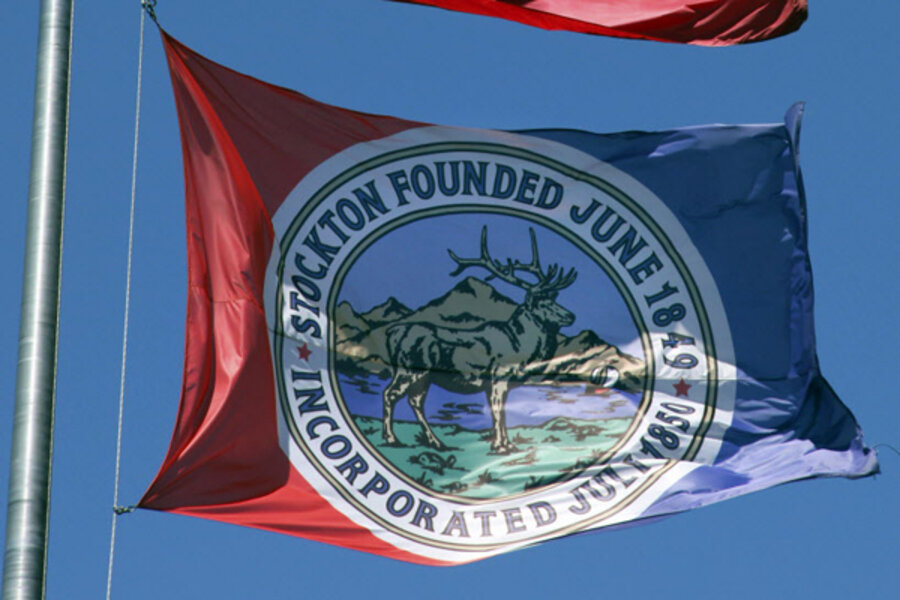Stockton, Calif., prepares for bankruptcy. Are other US cities at risk?
Loading...
The city of Stockton, Calif., population 290,000, is paving the way for a court filing that would make it the largest US city ever to enter bankruptcy.
Stockton got trapped between a housing bust, which depleted its tax revenues, and high costs for such obligations as retiree pensions. It reached a breaking point this week with the failure of last-ditch talks with creditors and labor unions.
The city, which is preparing a bankruptcy filing that could come as early as Wednesday, is a warning signal to America about risks in the realm of municipal finance.
The good news is that, with a few exceptions such as Detroit, other big cities don't face an imminent bankruptcy or financial crisis. And even metro areas that get into financial trouble usually find a way out that falls short of bankruptcy or default on their debts.
But America's road ahead appears likely to include more municipal bankruptcies. And to avoid financial emergencies, many other cities will face a period of tough choices about costs and taxes.
A central problem for cities nationwide is the cost of public-employee pensions and health benefits.
In a 2011 study published in the Milken Institute Review, Joshua Rauh, a finance expert at Northwestern University in Chicago, found that state and local government's have fallen short in their pension funding by somewhere in the neighborhood of $1.3 trillion (an estimate using official government accounting rules) and $3 trillion (using a stricter approach advocated by Mr. Rauh).
If the unfunded liability is as large as estimated by Rauh, that would total some $20,000 per US household. For residents of large cities including New York, Chicago, and San Francisco, the per-household liability is even larger.
If unaddressed, this situation could grow into a public-debt crisis.
For now, though, most cities have some running room. Currently, only 30 of some 12,000 municipalities rated by Moody's Investors Service have "junk" credit status, also known as below investment grade.
The list of most-endangered cities includes places that were hit hard by the housing bust and recession: Detroit is the most prominent example, and Santa Ana, Calif., has a credit rating that's only slightly above junk status in the Moody's ranking.
In bankruptcy, Stockton may seek concessions from both labor unions and creditors. Payments on some bonds could continue while the city defaults on others.
Many cities are feeling pressure to act in an effort to keep their credit ratings strong.
In Boston, for example, a 2011 deal with unions reduced both current employee benefits and future retiree liabilities.
This month, voters in San Diego and San Jose opted to pare back public-sector retirement benefits in an effort to improve the cities' financial health.
Rating firms are taking note of every positive move – and of every risk. In an April report on Chicago, Fitch Ratings predicted that the city's "debt burden will remain above average given recent tax base erosion, increasing debt service, and capital needs of ... municipal entities."
Standard & Poor's, meanwhile, offered this assessment of the more stressed city of Detroit: “Despite the city's ongoing efforts to ... eliminate its accumulated general fund deficit, it has slipped further into financial distress.”
A March study by Moody's found that over the past 42 years, there have been only 71 municipal-bond defaults in the US. Most of those were for special-purpose bonds related to housing or health care, while only five of the defaults were for a city's general-obligation bonds.
Most US cities have time to make financial adjustments and avoid falling into financial distress, says David Jacobson, a Moody's spokesman. And investors appear to be counting on state and local governments to do just that. Municipal-bond investments have risen in value over the past year, and are up in value since 2007, when a roughly two-year nationwide recession began.








